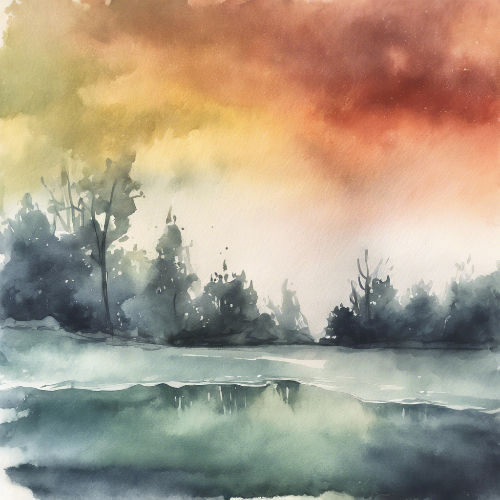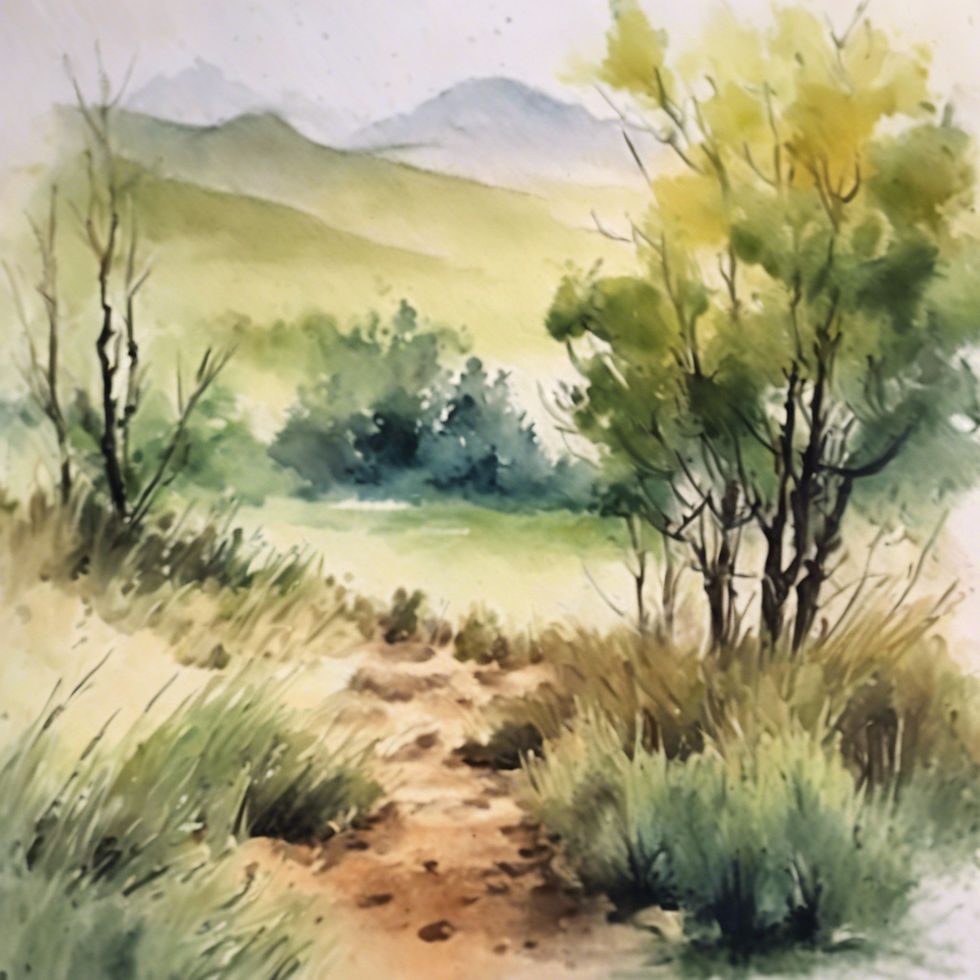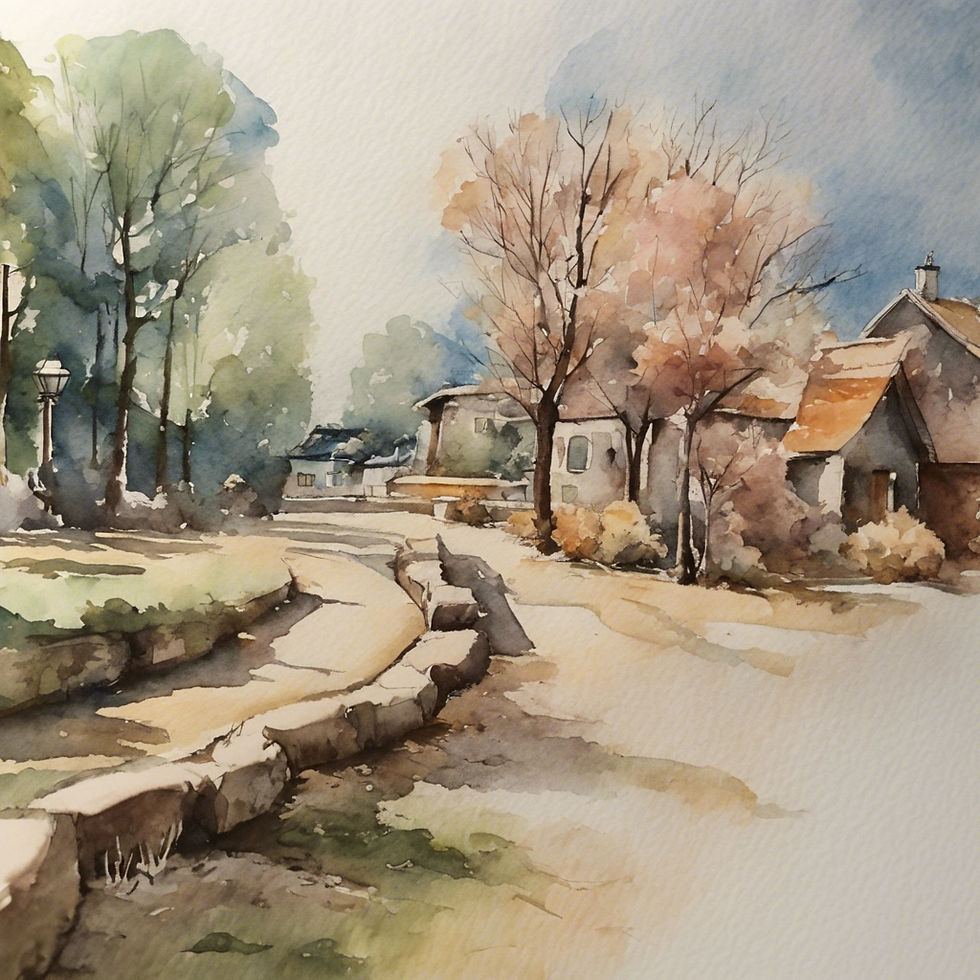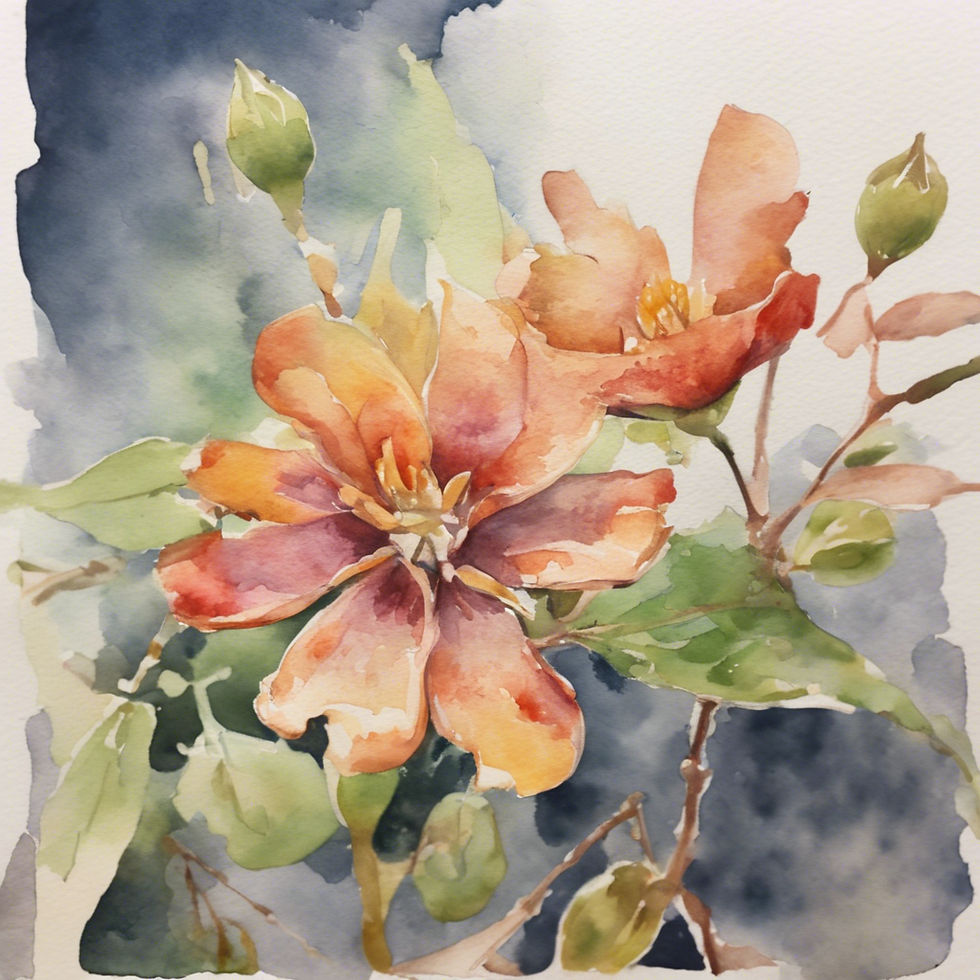Mastering Watercolour Techniques: A Guide for Beginners
- samikshaartstudio
- Aug 5
- 2 min read
Watercolour painting is a mesmerizing art form that has fascinated artists for generations. Its fluid nature and transparency create breathtaking effects and limitless creative possibilities. Whether you're an aspiring artist or seeking to enhance your skills, learning different watercolour techniques can take your work to new heights. In this blog, we'll delve into some essential watercolour techniques and offer tips to help you master this exquisite medium.
Essential Watercolour Supplies
Before diving into techniques, let's ensure you have the right supplies. Here's a basic list to get started:
Watercolour Paints: Available in tubes or pans, choose a set with a range of colors.
Brushes: Round brushes are versatile; also consider flat brushes for broader strokes.
Paper: Opt for cold-pressed or hot-pressed paper, typically 140 lb or heavier.
Palette: Use a palette or a plate for mixing colours.
Water Containers: Keep one for rinsing brushes and another for clean water.
Masking Tape: Useful for creating clean edges and borders.
Basic Techniques
1. Wet-on-Wet

The wet-on-wet technique involves applying wet paint onto wet paper. This creates beautiful, soft edges and seamless blending of colours. Begin by wetting the paper with clean water, then apply paint. Colours will spread and merge, creating a dreamy, flowing effect.
2. Wet-on-Dry

In contrast to wet-on-wet, wet-on-dry involves applying wet paint onto dry paper. This technique allows for more control and precision, making it ideal for detailed work. Use this to add defined lines or intricate patterns to your paintings.
3. Dry Brush

The dry brush technique creates texture and is perfect for adding fine details. Load a brush with paint, then remove excess moisture by dabbing it on paper towel. Apply the brush lightly to the paper, allowing the texture of the paper to show through.
4. Lifting

Lifting is the process of removing paint from the paper. Use a damp, clean brush or a paper towel to lift paint, creating highlights or correcting mistakes. This technique is useful for adding subtle details or adjusting the tone of your painting.
5. Glazing

Glazing involves layering transparent washes of colour over dry paint. This technique builds depth and richness in your artwork. Ensure each layer is completely dry before applying the next to maintain clarity and prevent muddiness.
Tips for Success
Experiment: Don't be afraid to try different techniques and combinations. Watercolour is a versatile medium that rewards experimentation.
Practice: Regular practice helps develop your skills and confidence. Keep a sketchbook to document your progress and explore new ideas.
Stay Patient: Watercolour can be unpredictable, but that's part of its charm. Embrace the unexpected and learn from each piece you create.
Use Quality Materials: Investing in good quality paints, brushes, and paper can make a significant difference in your results.
Conclusion
Mastering watercolour techniques takes time and patience, but the journey is immensely rewarding. By understanding and practicing these basic techniques, you'll gain the skills needed to create beautiful watercolour art. Remember, art is a personal expression—enjoy the process, and let your creativity flow!







Comments